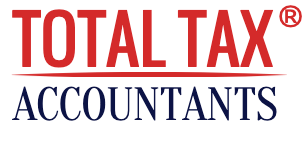
What is an Entrepreneurs’ Relief
Entrepreneurs often face challenges in managing their well-established business while some others not being satisfied with the profits they are making. Regardless of what the reason may be, entrepreneurs who wish to sell or give away their business may gain or be able to pay tax at a reduced tax rate. In simple words, Entrepreneurs’ relief means paying tax at 10% than 20% on all gain on qualifying assets. Theirs is no restriction to how frequently you can claim, however one may not exceed the lifetime limit of £10 million per shareholder. Earlier in 2010, it was up to £2 million which after three moths was raised to £5 million and finally in March 2011 to £10 million lifetime gains.
Eligibility to claim Entrepreneurs’ Relief:
- A person should be an officer or employee of the company for at least 24 months.
- As a shareholder one has held for 24 months, 5% or more of issued share capital which must entitle him to at least 5% of the voting share capital, 5% of the company’s distributable profits on winding up of the company. Shares acquired by the means of Enterprise Management Incentive(EMI) don’t need to satisfy this rule.
- Lifetime limit of £10 million per shareholder not being exceeded.
- The main activity of the company or holding company of a trading group is trading. However, if the company stops being a trading company, you can still claim for entrepreneur relief if you sell your shares within 3 years.
Spouse and civil partners are treated separately in the eye of law for ER up to the maximum lifetime limit of qualifying gains if relevant and required conditions are satisfied.
How to claim?
There are two ways through which you can go for Entrepreneurs’ relief:
- Through Self Assessment tax return in the supplementary “Capital Gains Summary” section.
- By filling in Section A of the Entrepreneurs’ Relief helpsheet.
For the year 2018-2019, the deadline to claim Entrepreneurs’ relief is 31 January 2021. Qualifying period or ER holding period for shares by Individual shareholders has been increased for at least 24 months before one can claim ER on the disposal of shares.
Entrepreneurs’ relief is a tax-efficient way to go down as you can access assets in a solvent company that you wish to close down, however, if HMRC thinks that an entrepreneur is just trying to gain advantage through ER in member voluntary liquidation(MVA), it will intervene and apply Targeted Anti-Avoidance Rule(TAAR).
Who does it affect?
- The main impact is going to be on sole traders or partners selling or giving away their business as it requires one to be an owner for at least one year before closing the down the company also director and employee with 5% or more shares in the said company.
- A Company can’t have more than 20% of its business activities involved in a non-trading activity like investments.
Since it has clearly outlined the qualification of shareholders to avail facilities through ER they need to keep a close eye on the ongoing changes fused in entrepreneurs’ relief policy.
Click here to get in touch today with our expert advisers who can assist you further with any enquiries you may have.


